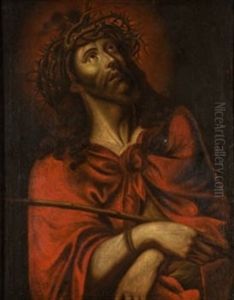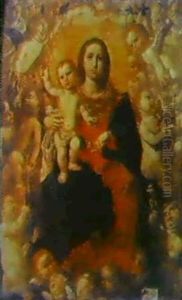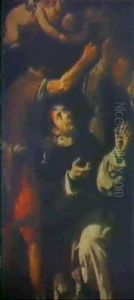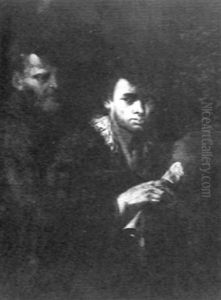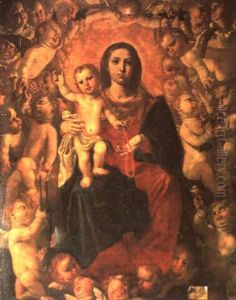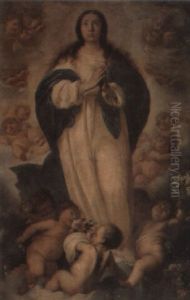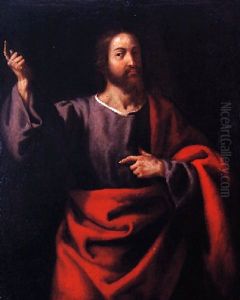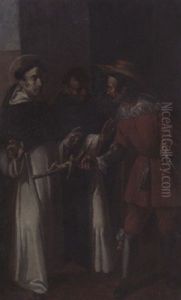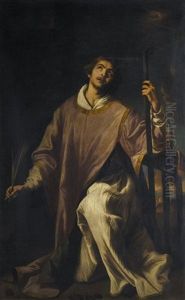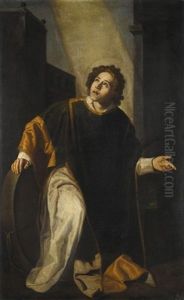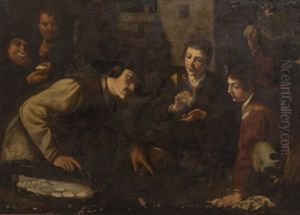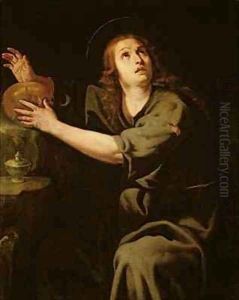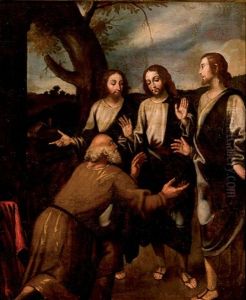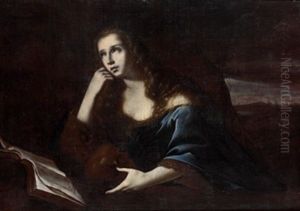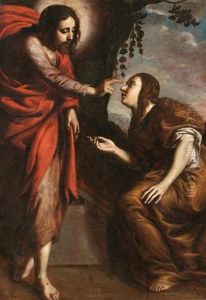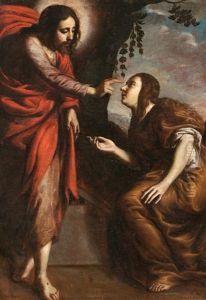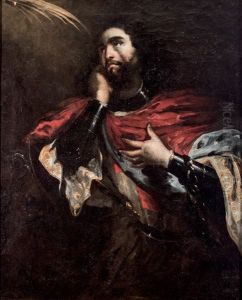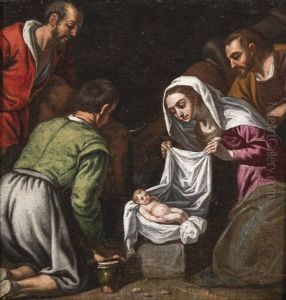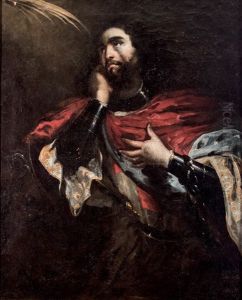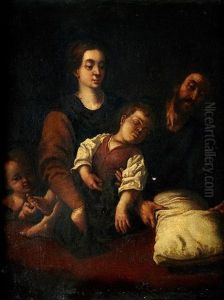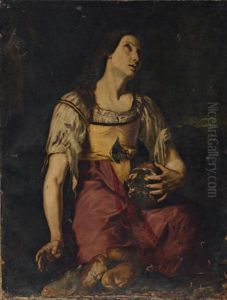Jeronimo Jacinto Espinosa Paintings
Jeronimo Jacinto Espinosa, born in 1600 in Cocentaina, a town in the province of Alicante, Spain, was a significant figure in the Spanish Baroque painting movement. His life and work were deeply embedded in the cultural and religious contexts of 17th-century Spain, a period marked by the Counter-Reformation, which greatly influenced the themes and styles of his artworks. Espinosa's contributions to art were primarily in the realm of religious paintings, reflecting the intense spirituality and religious fervor of his era.
Espinosa was apprenticed to Francisco Ribalta, a prominent Spanish painter, in his early years. This apprenticeship was crucial in shaping his artistic direction, as Ribalta was a master of the Spanish Tenebrist style, known for its dramatic use of light and shadow, a technique that Espinosa would later adopt and adapt in his own works. His connection to Ribalta not only honed his skills but also integrated him into the mainstream of Spanish Baroque painting, where he would leave a lasting imprint.
Throughout his career, Espinosa developed a distinctive style characterized by intense emotional expressions, a vivid palette, and a dynamic treatment of light and shadow. His works often depicted scenes from the Bible, the lives of saints, and the Virgin Mary, embodying the spiritual and emotional depth of these subjects. Espinosa's ability to convey complex theological themes through his art made his works highly valued by religious institutions, and he received numerous commissions for altarpieces, frescoes, and devotional panels throughout the Valencia region.
Espinosa's legacy is not only in the beauty and emotional power of his paintings but also in his contribution to the development of the Spanish Baroque style. His work represents a bridge between the stark realism and spiritual intensity of his mentor, Ribalta, and the more elaborate, decorative tendencies that would characterize later Baroque art in Spain. Though not as widely recognized internationally as some of his contemporaries, within Spain, Espinosa is celebrated as a pivotal figure in the country's artistic heritage.
Jeronimo Jacinto Espinosa died in 1667 in Valencia, leaving behind a body of work that continues to be studied and admired for its technical skill, emotional depth, and vibrant spirituality. His paintings remain an important part of Spanish art history, reflecting the complex interplay of faith, culture, and artistry that defined the Baroque period in Spain.
